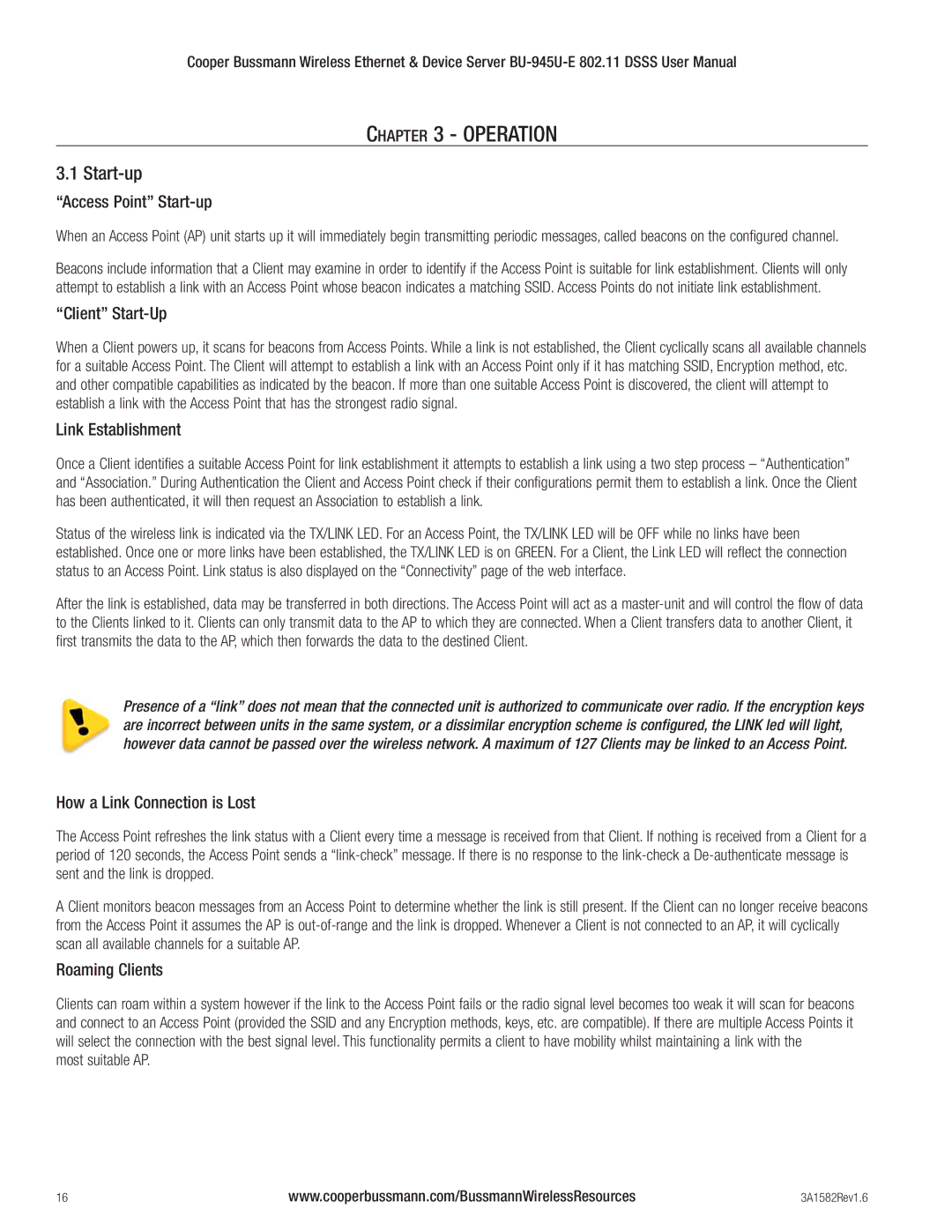
Cooper Bussmann Wireless Ethernet & Device Server
CHAPTER 3 - OPERATION
3.1 Start-up
“Access Point” Start-up
When an Access Point (AP) unit starts up it will immediately begin transmitting periodic messages, called beacons on the configured channel.
Beacons include information that a Client may examine in order to identify if the Access Point is suitable for link establishment. Clients will only attempt to establish a link with an Access Point whose beacon indicates a matching SSID. Access Points do not initiate link establishment.
“Client” Start-Up
When a Client powers up, it scans for beacons from Access Points. While a link is not established, the Client cyclically scans all available channels for a suitable Access Point. The Client will attempt to establish a link with an Access Point only if it has matching SSID, Encryption method, etc. and other compatible capabilities as indicated by the beacon. If more than one suitable Access Point is discovered, the client will attempt to establish a link with the Access Point that has the strongest radio signal.
Link Establishment
Once a Client identifies a suitable Access Point for link establishment it attempts to establish a link using a two step process – “Authentication” and “Association.” During Authentication the Client and Access Point check if their configurations permit them to establish a link. Once the Client has been authenticated, it will then request an Association to establish a link.
Status of the wireless link is indicated via the TX/LINK LED. For an Access Point, the TX/LINK LED will be OFF while no links have been established. Once one or more links have been established, the TX/LINK LED is on GREEN. For a Client, the Link LED will reflect the connection status to an Access Point. Link status is also displayed on the “Connectivity” page of the web interface.
After the link is established, data may be transferred in both directions. The Access Point will act as a
Presence of a “link” does not mean that the connected unit is authorized to communicate over radio. If the encryption keys are incorrect between units in the same system, or a dissimilar encryption scheme is configured, the LINK led will light, however data cannot be passed over the wireless network. A maximum of 127 Clients may be linked to an Access Point.
How a Link Connection is Lost
The Access Point refreshes the link status with a Client every time a message is received from that Client. If nothing is received from a Client for a period of 120 seconds, the Access Point sends a
A Client monitors beacon messages from an Access Point to determine whether the link is still present. If the Client can no longer receive beacons from the Access Point it assumes the AP is
Roaming Clients
Clients can roam within a system however if the link to the Access Point fails or the radio signal level becomes too weak it will scan for beacons and connect to an Access Point (provided the SSID and any Encryption methods, keys, etc. are compatible). If there are multiple Access Points it will select the connection with the best signal level. This functionality permits a client to have mobility whilst maintaining a link with the
most suitable AP.
16 | www.cooperbussmann.com/BussmannWirelessResources | 3A1582Rev1.6 |
